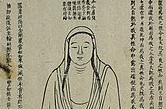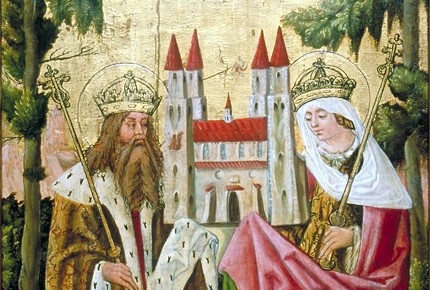Disproving the notion that all women aspire to marriage and motherhood by underlining single life or celibacy as a deliberate choice
Before the widespread availability of birth control in the 20th century, remaining unmarried and celibate was the most effective way to avoid pregnancy and motherhood. Furthermore, at times when marriage meant women would lose almost all legal rights they had as unmarried women, spinsterhood could be the practical choice to maintain those (limited) rights. Therefore, contrary to popular belief, single life and celibacy were not necessarily a last resort for women who couldn’t marry but could actually be an instrument to maintain agency over their own lives.
Note: this excludes situations of violence against women, such as rape and forced marriage. It’s also important to recognize that people whose gender and/or sexual orientation did not align with the expectations of society, i.e. cis-heterosexuality, would not see celibacy and/or single life as a choice but as a necessity because their authentic self was not accepted.
Religious life as an alternative to marriage

Christian nuns
Christianity is a religion that offered women an acceptable – and even respectable – path outside of marriage. Although religious women were considered to be brides of Christ when they professed their vows, for all intents and purposes, they were single and celibate. Some even explicitly stated their rejection of marriage as a motivation behind joining religious or semi-religious orders, such as St. Catherine of Siena (1347-1380) and Sor Juana Inés de la Cruz (1648-1695).

Buddhist and Taoist nuns
Buddhism and Taoism also offered religious life as an alternative to marriage. In one variation of the Chinese legend of Princess Miao-shan (one of the incarnations of the Guanyin Bodhisattva), she refuses to marry and chooses religious celibacy instead. There is also a written record of a medieval Buddhist nun who pursued religious life because she feared dying in childbirth (like her mother had).
Celibacy and childlessness within marriage

Chaste marriages
While the idea of celibacy within marriage sounds like a paradox given the traditional association between marriage and procreation, chaste marriages did exist at times. During the Middle Ages in Europe, these were usually motivated by religious fervor, such as in the case of St. Etheldreda (636-679), who remained a virgin through both of her marriages. Vows of chastity were also taken by Kinga of Poland (1224-1292) and her husband Bolesław V, as well as between Cunigunde of Luxembourg (c. 975-1033) and her husband Henry II. Of course, it is also possible that these couples were actually infertile and that claims of chaste marriages were meant to cover what would have been seen as a failure to procreate.

Infertility as a blessing
If we acknowledge that a percentage of women have never desired to become mothers, it is easy to recognize that for some couples who did not practice abstinence, infertility and childlessness were actually a blessing. It is, however, difficult to quantify.
The allure of single life in regard to financial freedom and legal rights
Although the rights of women were relatively limited throughout history, in some legal systems, unmarried women (femmes soles) had more rights than married ones. This included both never-married women and widows. For example, in the 18th century, American women who were unmarried could enter contracts, own property, and manage their own wages or finances. By comparison, married women were considered to be under the authority of their husbands and lost any legal and financial agency for the duration of the marriage.
Therefore, remaining unmarried was a practical choice for women who owned significant property or for those who engaged in trades.
